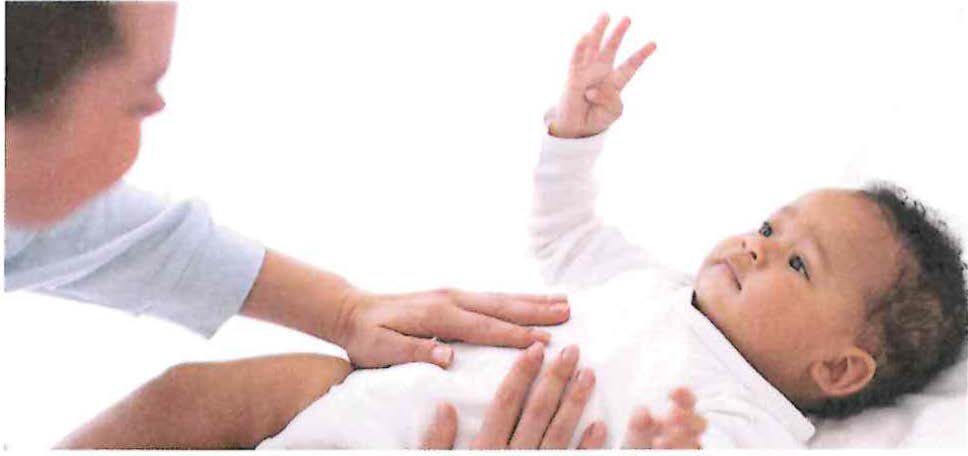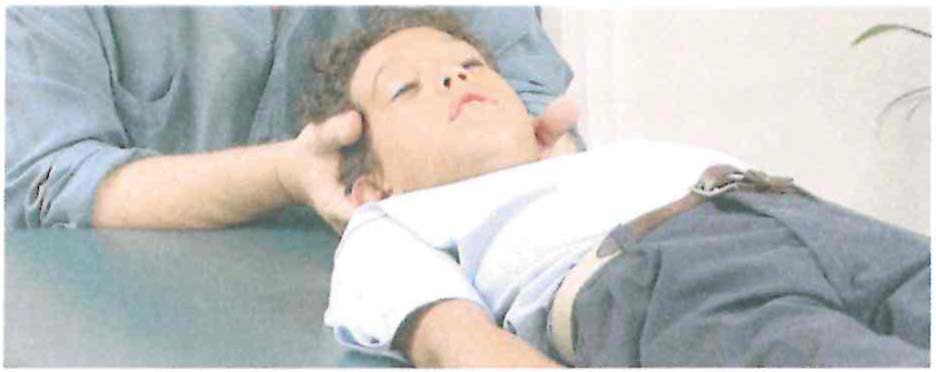How can CranioSacral Therapy help my child?
CranioSacral Therapy (CST) is a gentle, hands-on method of evaluating and enhancing the functioning of the physiological body system called the craniosacral system. The craniosacral system is comprised of the membranes and cerebrospinal fluid that surround and protect the brain and spinal cord (the central nervous system). By freeing the central nervous system to perform at its best, CST naturally reduces pain and stress, strengthens one’s resistance to disease, and enhances health and well-being. CranioSacral Therapy helps to align the body structurally and facilitates the bodily systems to work properly. And because it’s so gentle and noninvasive, CST has proven effective for all ages, from newborns to elders.
What are the benefits of early intervention?
It’s widely recognized that in certain instances, the birth process can generate mild to severe central nervous system abnormalities. CranioSacral Therapy carried out in the delivery room, or within the first few days of life, can potentially reduce a wide spectrum of health challenges, many of which might not otherwise become apparent until the child is in school. It can even address problems with head shape and skull-bone override, naturally.

How Did CranioSacral Therapy Begin?
CranioSacral Therapy was pioneered and developed by osteopathic physician John E. Upledger. Dr. Upledger served from 1975-1983 as a clinical researcher and Professor of Biomechanics at the College of Osteopathic Medicine at Michigan State University. It was during those years that his team of anatomists, physiologists, biophysicists, and bioengineers was tasked with performing experiments to test the existence and influence of the craniosacral system. Many congenital and acquired health challenges also respond well to CST. It has shown to be effective at improving and maintaining a healthy immune system, and because of its gentle, non-invasive qualities, it seamlessly accommodates other therapies delivered by early-intervention medical teams.
What to expect in your child’s CranioSacral Therapy session.
A typical CST session takes place in a quiet, peaceful setting. Parents are encouraged to bring toys and blankets to the session that the child will associate with comfort. The child remains clothed, and is treated on a padded table or therapy floor. Parents stay in the therapy room and participate in the child’s session. They may lie on the table or floor with the child, if that helps the child feel more secure. Reactions to CST vary. Children may sleep through the session, while others may be alert, and even crawling around (toys come in handy to distract them and keep them stationary). Older children are usually comfortable lying on the table and relaxing. Children may be silent or vocal, and sometimes may cry. The therapist works with the child to help them to feel secure and relaxed. Through gentle touch, the therapist begins monitoring the rhythm of the fluid that is flowing around the central nervous system. Delicate manual techniques are then used to release restrictions in the child’s body and head, thus improving the function of the central nervous system. The sessions are generally deeply relaxing, creating feelings of warmth or gentle pulsing in the areas where the therapist is working.

How CranioSacral Therapy can help children with special needs.
CST has been shown to ease the tension patterns in children. This has been show to help children on the autism spectrum to feel more comfortable and aware of the world around them.
CST assists children in relaxing. This can benefit children with ADHD, as it can help their brain slow down its cataloging activity when they relax.
CST helps reduce tension patterns around the eyes and ears, so the areas of the brain that process language may function better. This may help dyslexic children, as they often have difficulty processing visual and auditory information.
“The impact of having a son who is physically challenged is so painful, it is beyond words. Now as I see all of that reversed with CranioSacral Therapy, my heart is so grateful. Joe’s body, legs, arms and fingers are all working now.
Thank you for the ray of hope that unlocked all the closed doors.”
– M. Polk, Wisconsin

John E. Upledger, DO, OMM
The results of those scientific studies explained the function of the craniosacral system, and its use in evaluat- ing and treating poorly understood malfunctions of the brain and spinal cord. Dr. Upledger went on to develop CranioSacral Therapy and other complementary modalities that are now taught worldwide to healthcare professionals through Upledger Institute lnternational’s educational programs. .

Hope for children with health challenges.
It’s no wonder children respond so favorably to CranioSacral Therapy. Because a child is still developing physiologically, the central nervous system is especially accepting of this effective therapy. Even a single session can help your child achieve priceless benefits, from calmness and greater focus to better integrated sensory facilities. Additional sessions can extend and strengthen these outcomes, which may help in creating a lifetime of good health for your child.

